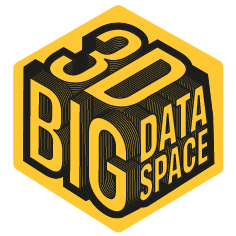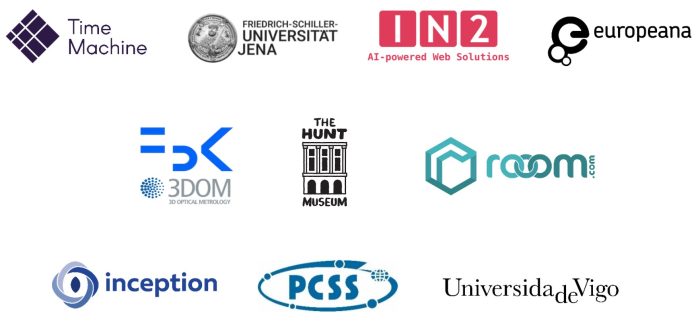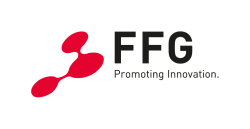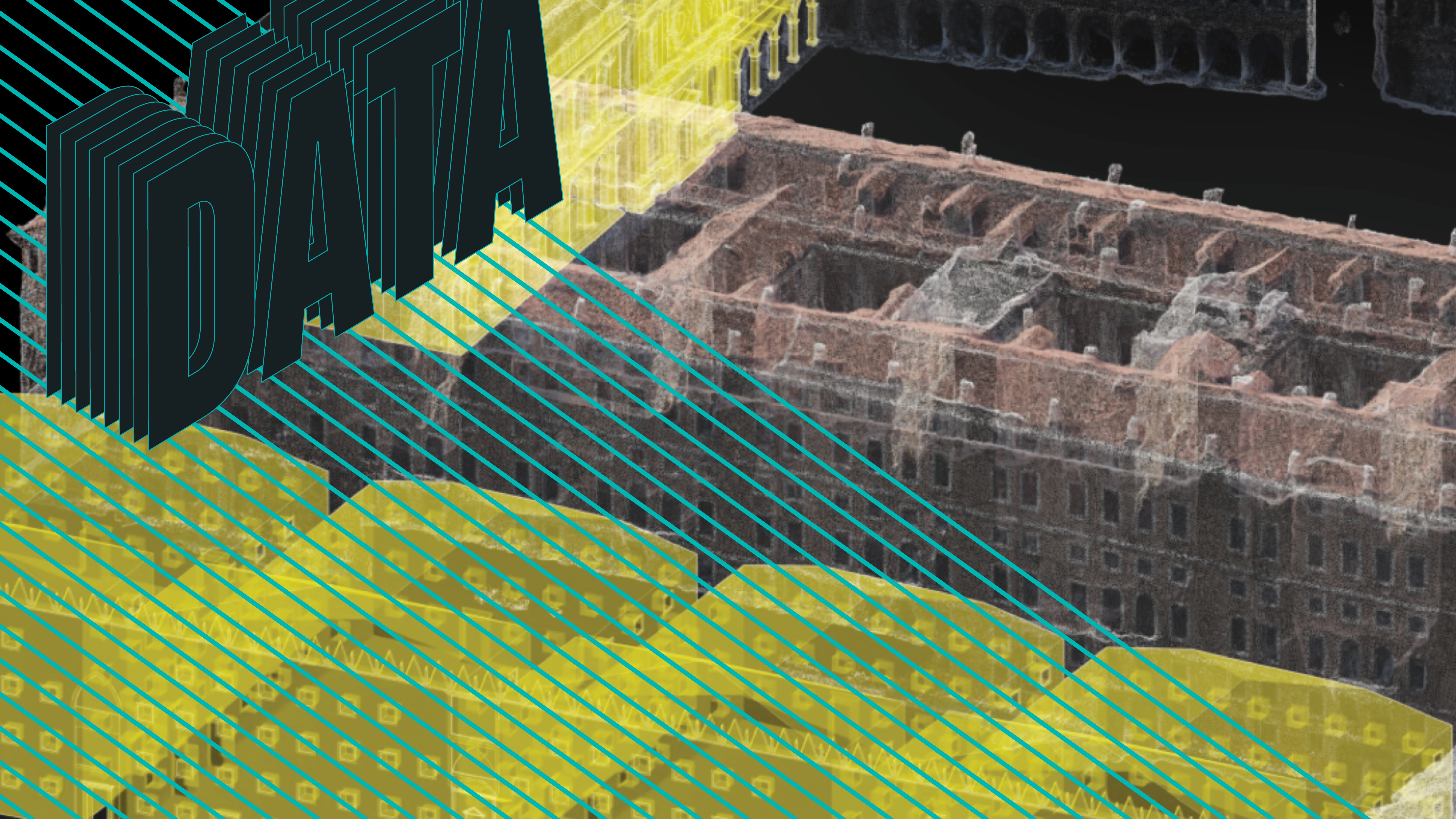The 3DBigDataSpace project aims to expand the collection of high-quality 3D content in the common European data space for cultural heritage. It is envisioned to establish a stable, long-term storage solution for 3D cultural heritage assets and metadata from various providers and aggregators. The project will enhance the findability, contextualisation, and reusability of 3D content by developing AI tools for data enrichment and harmonisation as well as trialling virtual/augmented reality viewers and 4D world applications. 3DBigDataSpace is funded by the European Union and is realised by twelve cooperating organisations.

The Time Machine Organisation (TMO) is the coordinator of the 3DBigDataSpace project. The TMO maintains and curates an international network of currently more than 150 projects and initiatives – Local Time Machine (LTM) projects – dealing with history and heritage in specific cities or regions. The TMO’s primary mission is to develop an open digital space that enables users to explore the evolution of cultural heritage sites and artefacts across different eras. The TMO drives strategic development and innovation in the field, influences policy, fosters global collaboration and sustainability, and co-creates interdisciplinary research bridging technology and the humanities.
On behalf of the 3DBigDataSpace project, the TMO invites applications from organisations under this call. Two 3D projects will each be awarded
EUR 10.000
for providing 3D assets and metadata for aggregation to the Data Space. The selected projects will benefit from processing, standardisation, and long-term preservation of their 3D assets, which will ensure their accessibility and interoperability within the cultural heritage community.
Timeline
| 30 April 2025 | Launch of the call |
30 June 2025 | Deadline of applications |
September 2025 | Notification of acceptance |
| October 2025 | Data aggregation start |
| January 2026 | Data aggregation end |
This call is the first one in a series of calls within the TMO Synergy Grants Programme. Further calls on application development and digitisation training will be available in the next months.
Target Audience
This call is open to organisations dealing with 3D heritage digitisation and modelling such as:
- GLAM institutions (i.e. galleries, libraries, archives, museums)
- Research groups (e.g. universities, institutes, R&D departments)
- Public stakeholders (e.g. local administrations, tourism offices)
- Private stakeholders (e.g. 3D scanning companies, XR application developers, NGOs)
Target Content
We seek submissions representing a diverse range of 3D captured or reconstructed assets across different scales, geographic and temporal contexts, cultural and historical significance. Categories of interest include:
1. Built Environment & Heritage Sites
- Single or collections of architectural structures: e.g. building complexes like churches, houses, hospitals, schools, civil edifices, or monuments, and infrastructure like bridges or stations
- Urban-scale scenes: e.g. settlements or parts of settlements such as old towns, agricultural or industrial heritage sites, gardens and other recreational sites
- Archaeological sites: e.g. ruins, earthworks, excavated remains, historical landscapes, castles, caves and underground sites, museum villages, underwater heritage, lost environments
2. Movable Cultural & Archaeological Artefacts
- Single or collections of artefacts: e.g. sculptures, ceramics, glassware, metalwork, woodwork, tools, manuscripts, textiles, jewellery, musical instruments, and artworks; curated heritage sets grouped by theme, period, or provenance
- Means of transportation: e.g. historic ships, cars, trains
We welcome submissions that include either:
- Reality-based models: e.g. captured through laser scanning, photogrammetry, computer tomography, or other data-driven methods
- Source-based models: e.g. derived procedural, parametric, or manually modelled 3D reconstructions
Models may or may not be enriched with additional information:
- Semantic models: e.g. BIM, models with structured metadata, annotations, or enriched contextual information such as historical narratives or provenance records, or linkages to other heritage data
- Non-semantic models: e.g. raw or processed 3D geometries, such as point clouds, meshes, voxels, implicit and neural representations, optionally animated
Models may be unpublished or have already been published under a permissive license (e.g. CC0, CC-BY, CC BY-SA, CC BY-NC).
Eligibility Criteria
The applicant’s organisation must:
- Reside in a member state of the European Union or in a state currently associated to Horizon Europe.
- Not currently receive or already received any funding (i.e. no double-funding) for Europeana ingestion of the 3D assets.
- Already have digitised (i.e. captured or reconstructed) the 3D assets.
Obligations
Selected applicants must:
- Grant all necessary rights for the 3D assets to be uploaded under a license ensuring open access and reusability.
- Provide the 3D assets in both, the original format (e.g. PLY, E57, IFC, Gaussian Splats) and GLTF/GLB as an interoperable format, while verifying geometric compatibility (e.g. correct material, lighting properties) for ingestion into the data repository Zenodo.
- Ensure compliance with metadata requirements (i.e. EDM) for aggregation into the Europeana web portal and georeference any geographic assets for display in a map application.
- Participate in a public European event (e.g. conference, workshop) to present the assets and applied methods.
Benefits
Selected applicants will:
- Receive a EUR 10.000 sub-contract to fulfil the described tasks and to produce the required documentation to report on the activities.
- Be assisted in the registration of the dataset as an LTM project within the TMO.
- Get support from specialists from the TMO to process the 3D assets for archiving, georeferencing and metadata ingestion.
- Gain access to the network and documentation of the involved twelve cooperating organisations within the 3DBigDataSpace project.
- Receive communication coverage to showcase their project by the TMO after a successful realisation.
Evaluation Criteria
A board of jury members will assess the submissions based on:
- Quality & Quantity of the provided 3D assets
- Scientificity of the digital asset creation workflow
- Feasibility of data provision (e.g. staff capacity, processing methods, time demand, risks)
- Reusability, Impact & Interest for the cultural heritage community and other domains (e.g. combination with other datasets, cooperation with local/regional stakeholders, expansion potential)
Application Procedure
Participants in the call should fill in the application form (see button below). It is recommended to provide sufficient details in the particular sections. Only complete applications submitted through the form will be considered for evaluation.
FAQ
How will the applications be evaluated in detail?
Please find the questionnaire to be handed to the jury members here.
Why does a project partner need to be specified in the application form?
In digitisation projects, often multiple stakeholders are involved who combine their expertise. Having a project partner promotes synergies, networking and knowledge transfer. Those criteria are ambitioned by the European Commission and the TMO.
Can the project partner work at the same organisation as the one of the applicant?
No, the project partner needs to be another organisation. For example, if the applicant works at a university, the project partner may be a museum, tourism office, private company, or another research institution. There are more examples of organisations in the target audience of the call description, which apply also for potential project partners.
What are the tasks and benefits for the project partner?
The project partner may serve as a consultant/expert, may carry out a part of the expected work, may gain knowledge from the applicant (e.g. by workshops), may receive the digitised 3D assets (e.g. for public display, for research or education, for a data portal, for application development), may contribute further digitised 3D assets, may advertise the assets or the work (e.g. social media, newspaper), etc.
Does the involvement of the project partner need be already formalised?
There are no formal requirements at this stage. Feel free to indicate the anticipated tasks and benefits of the project partner in the first or second text field of section ‘3. Project Management’ in the application form. In case the application is successful, a contract will be established where tasks will be defined and assigned to the applicant and project partner.
Does the funding need to be shared with the project partner?
The applicant plans and negotiates the distribution of the funding with the project partner. If the work is carried out at the applicant’s organisation and the project partner receives non-monetary benefits (see examples above), 100% of the funding can be assigned to the applicant. The funding can also be spread at a certain percentage between the applicant and the project partner.
Can I propose any cultural heritage 3D assets outside of Europe?
Yes, submissions about historical 3D assets anywhere on Earth are welcome, however, your institution needs to be based in the European Union or in an associated state to Horizon Europe.
Are organisations from Switzerland eligible to participate in the call?
Yes. Switzerland has signed a transitional arrangement about the Horizon Package in April 2025 allowing a participation in calls.
Contact
If you have any other questions or inquiries regarding the call and application procedure, please send an email to ltm[at]timemachine.eu.



